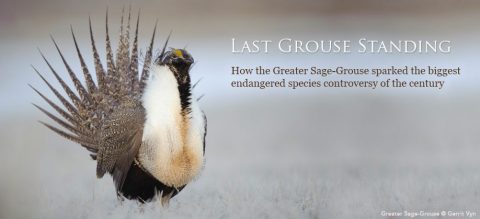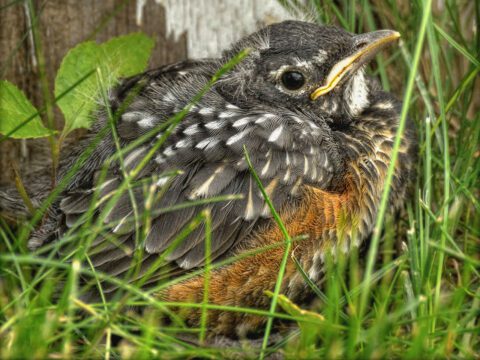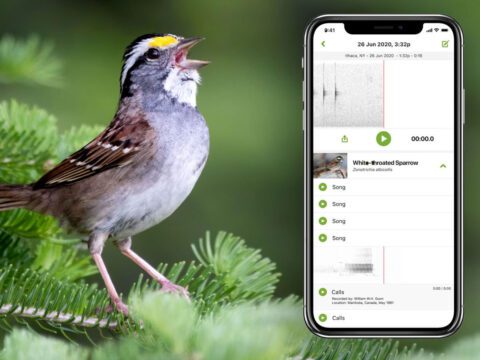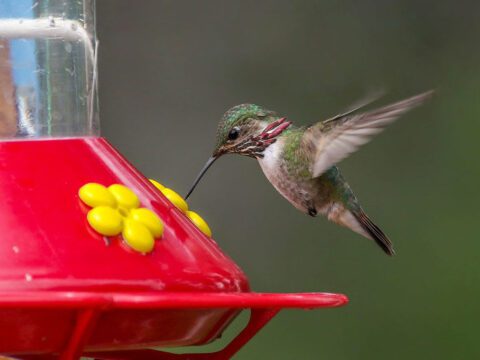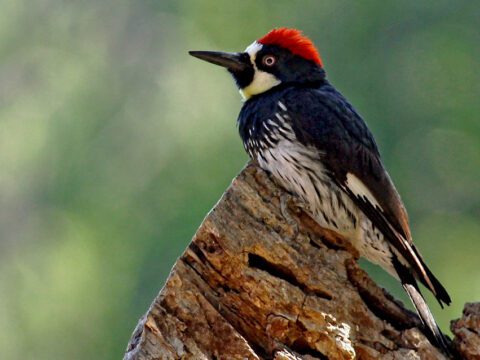Purple Martins, Ecological Mismatches, and Climate Change
By Jack Connor
From the Spring 2015 issue of Living Bird magazine.
April 15, 2015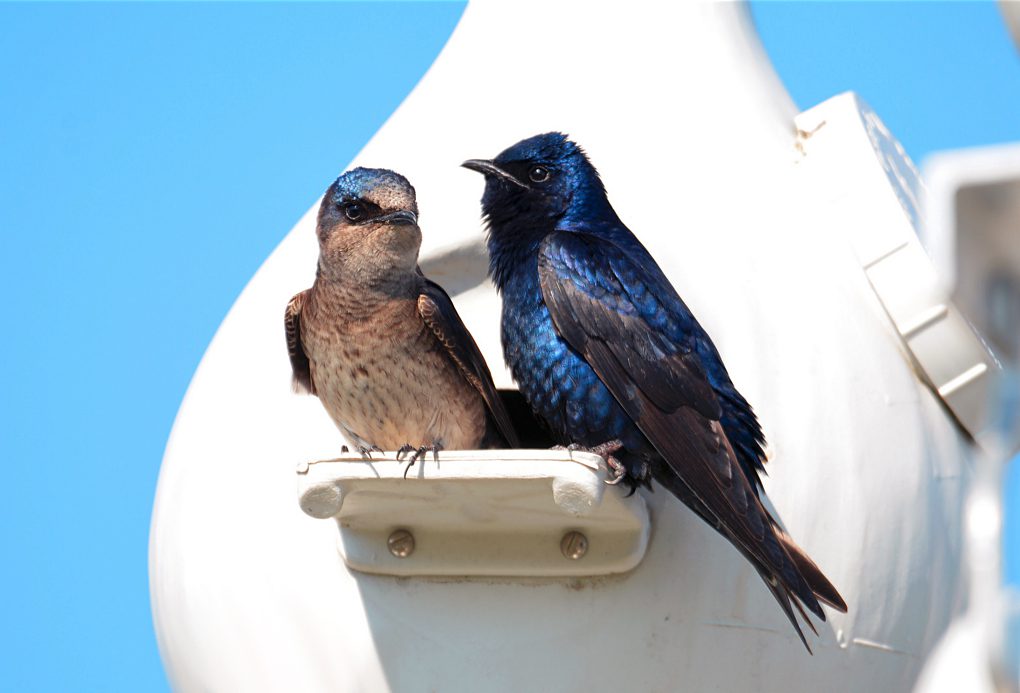
Is one of our best-loved migrants headed for an ecological mismatch?
How will migrants respond?” seems to be the question asked most frequently by birders, ornithologists, and others worried about the impacts global climate change will have on birdlife. Migration is intimately connected with seasonality, as we all know. Most migrant species follow precisely timed schedules that enable them to take advantage of feeding opportunities en route and to arrive on their nesting grounds just as their prey are building in numbers toward the annual peak. Migrants depend on that annual flush of food for their breeding success. In fact, that once-a-year, time-limited bounty is the reward for migration. It is the reason birds migrate.
What will migrants do as that food peak shifts forward in the year? How quickly can they adjust their schedules? And how will they fare in the meantime? Climate change has happened before, of course. If you take a longer view—looking back over millennia instead of human lifespans of years and decades—you might even claim, “The climate is always changing.” Geology and paleontology have demonstrated that glaciers have melted many times over the eons (and even disappeared entirely), ocean levels have risen, and various plants and animals have expanded their ranges poleward as the planet warmed. Although fossils can’t tell us, the temperate zones’ annual seasons of leaf-out, insect emergence, and bird breeding almost certainly shifted forward during those periods. Fossils also can’t tell us what happened to bird numbers during the process.
The worrisome differences this time are, first, that so many bird populations are already under stress for other reasons (including habitat loss, forest fragmentation, and environmental contamination), and second, that the warming is coming at such high speed. The last decade of the 20th century was the warmest in at least 150 years (since direct measurements began), and the first decade of the 21st century was hotter still. Levels of CO2, the primary cause of the greenhouse effect, have risen steadily since measurements began at the Mauna Loa Observatory in Hawaii in 1959—from 316 parts per million then to close to 400 ppm today, and the average increase each year has accelerated since 2005.
Are migrants headed for “ecological mismatch”—when the plants and insects they depend on are shifting their patterns faster than the birds can respond?
Researchers on both sides of the Atlantic have been studying changes in migration timing—often by examining first-of-the-year sightings recorded by bird clubs, collected over many years. An investigation by Christopher Butler, for example, “The Disproportionate Effect of Global Warming on the Arrival Dates of Short-distance Migratory Birds in North America,” published in the journal Ibis in 2003, examined records from the Cayuga Bird Club in Ithaca, New York (which date back to 1903), and records from the Worcester County Ornithological Society in Worcester, Massachusetts (dating to 1932). For a similar study, “Influence of Climate Change on Avian Migrants’ First Arrival Dates,” published in The Condor in 2011, Robert L. DeLeon et al. charted the records the Buffalo Ornithological Society compiled from 1967 to 2008.
Both of those studies and several others have found that, in general, shortdistance migrants (species that winter in the southern United States, such as Eastern Phoebe, White-eyed Vireo, Ruby-crowned Kinglet, and Tree Swallow) seem to be responding more readily than long-distance migrants (species that winter in the West Indies, Central America, or South America, such as Great Crested Flycatcher, Red-eyed Vireo, Wood Thrush, and Purple Martin). The DeLeon study found that in the four decades covered by the data, the 37 short distance migrants recorded had moved their arrival dates ahead an average of .15 days a year. By 2008 they were arriving on average nearly a week earlier than they had arrived in 1967. By contrast, the 56 long-distance migrants recorded had pushed their average first-arrival date ahead an average of .06 days a year—for a total advance from 1967 to 2008 of only about two-and-a-half days.
One suggestion is that some of the difference between the two groups may have to do with local temperatures. Climate change has had more effect in the temperate zone than in the tropics. Warming temperatures in the southern United States may signal migrants wintering there to depart for their breeding grounds earlier in the year, and also perhaps spur them to move more quickly along the way.
Can birds wintering in the tropics somehow sense warming temperatures thousands of miles to the north, through unknown, indirect signals? If that is not possible, can they adjust their arrivals on their nesting grounds by accelerating their flights as they encounter warming temperatures when they reach North America?
A recent project using state-of-the-art technology suggests that for at least one long-distance migrant the answer to both of those questions may be no.
Purple Martins winter in South America from Colombia and Venezuela south to Brazil and northern Argentina. They nest from Baja California, Mexico, north all the way to Canada. For many of us, the return of the first inky-blue males—swooping around their colony sites, chirping back and forth—is a delightful sign that spring is surely here. When the females return a day or two later and the colony becomes wonderfully noisy and active, it can make you feel like all is right in the world. Martin numbers are down in many areas, however. Could our sense that they always seem to return within the same few dates on the calendar be a sign of trouble?
A project led by Kevin Frasier of York University in Toronto, Canada, in 2012 used geolocators to trace the individual migrations of two groups of martins from their wintering grounds in South America back to their nesting sites in Virginia and Pennsylvania—one-way flights of more than 4,000 miles. Geolocators are tiny light-level sensors that the birds wear on their backs. They are much smaller than GPS devices and do not connect to satellites. The data record for the entire year is recovered when the birds return to their nests and are recaptured.
The title of the subsequent report, which appeared in PLOS One in 2013, reveals the team’s conclusion: “A Trans-Hemispheric Migratory Songbird Does Not Advance Spring Schedules or Increase Migration Rate in Response to Record-Setting Temperatures at Breeding Sites.” Although temperatures in the Amazon basin were normal in the spring of 2012, the southern United States was experiencing the warmest spring on record. The martins departed from their wintering grounds at the same time they had in previous years—and, tellingly, did not accelerate as they reached North America.
It may be that acceleration is simply not physically possible. The geolocators have shown that martins (and other long-distance songbirds tracked by the team) migrate at much faster speeds than previously believed. One female martin, tracked by the team in an earlier study, apparently flew more than 4,500 miles in 13 days (approximately 340 miles per day). The birds may simply not be able to fly any faster.
Despite the far warmer weather in spring 2012, the birds returned to Virginia and Pennsylvania on their usual dates. The team’s report suggests that a schedule adjustment in Purple Martins may only come through natural selection—where, over many generations, the majority of birds following the traditional timing breed less successfully than the few that depart earlier. If that is the case, a timing change will almost certainly be the result of a long, slow process. Martins could be in trouble for the foreseeable future as the majority of birds follow the ancestral schedules and so fall farther and farther behind the peak periods of aerial insects.
On the other hand, the York University project was a relatively small one, tracking 52 birds from only two breeding areas over a single season. It’s almost certainly too soon to draw final conclusions about its meaning, and even less about the future of Purple Martins in general. Let’s hope that Fraser and colleagues will receive the funding to continue their work and also that other researchers will follow their work with similar investigations—tracking martins at other sites and tracking other long-distance migrants as well.
The DeLeon study concludes, “Understanding the link between migration timing and climate change is the first step in determining how disruptions of this system could affect populations and which groups are most at risk.”

All About Birds
is a free resource
Available for everyone,
funded by donors like you
American Kestrel by Blair Dudeck / Macaulay Library
